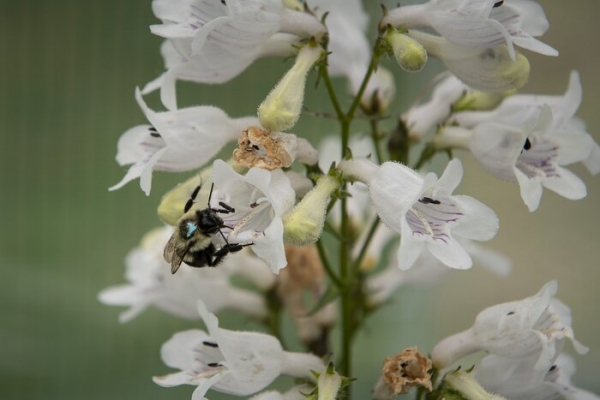New research published in the journal Ecology conclusively shows that certain physical traits of flowers affect the health of bumble bees by modulating the transmission of a harmful pathogen called Crithidia bombi. In particular, the research, conducted by scientists at the University of Massachusetts Amherst, shows that the length of a flower’s corolla, or the flower’s petals, affects how this pathogen gets transferred between bees because shorter corollas mean that fewer bee feces wind up inside the flower itself and in the path of the bees in search of nectar.
Scientists have recently sounded the alarm over the “insect apocalypse,” or massive die-off of the world’s bugs. By some estimates, the past 50 years have seen a 75% decline in the world’s insect life. Among the many ecological implications of this apocalypse is the collapse of pollinator species, some of which scientists estimate have died back by 90% in the US during the last twenty years.
Though there are many reasons for the apocalypse, including habitat loss, pesticide use and more, one cause is the devastation wrought by pathogens. For bumble bees, a parasite called Crithidia bombi, often transmitted by bee poop, has been a widely prevalent scourge.
One widespread and popular attempt to save the bees has been to plant pollinator gardens. “But what plants ought we to be planting?” asks Jenny Van Wyk, a postdoctoral researcher in biology at the University of Massachusetts Amherst and the paper’s lead author. “We are trying to gather information on how floral traits impact pollinator health, so that we can think beyond species-specific information. That way, we may be able to generalize across species that have similar traits and so help to guide planting decisions.”
Read more at University of Massachusetts Amherst
Image: One of the countless bumblebees painted blue to track bee health (Credit: Ben Barnhart)


